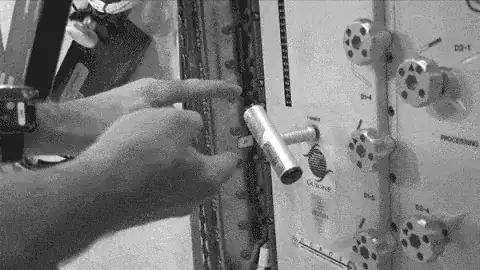The Tennis Racket theorem describes the following effect: rotation of an object around its first and third principal axes is stable, while rotation around its second principal axis (or intermediate axis) is not.
This gives rise to an interesting phenomenon called the Dzhanibekov Effect, discovered in 1985 in a space station, in which a t-bar rotating in zero gravity along its intermediate axis flips around magically (without any torque or force applied), cf. e.g. this Phys.SE post.
I've been wondering how would it feel as a human being to experience the "Dzhanibekov flip". Since human beings are asymmetric and have 3 different moments of inertia, we should flip if rotated around the intermediate axis. This experience would, of course, be performed in space (in zero gravity). As I thought about this, I realized that we wouldn't feel any difference at all. Since angular momentum is conserved (it has to be! there is no torque), we would feel we're still rotating the same. And yet, someone else watching us would see us flip.
So, my question is this: Am I thinking correctly above about the human experience of the Dzhanibekov Flip? Because this is somewhat intuition-defying. That t-bar in the animation above is certainly flipping. Would it not be cognizant of its flip if it were a human?
